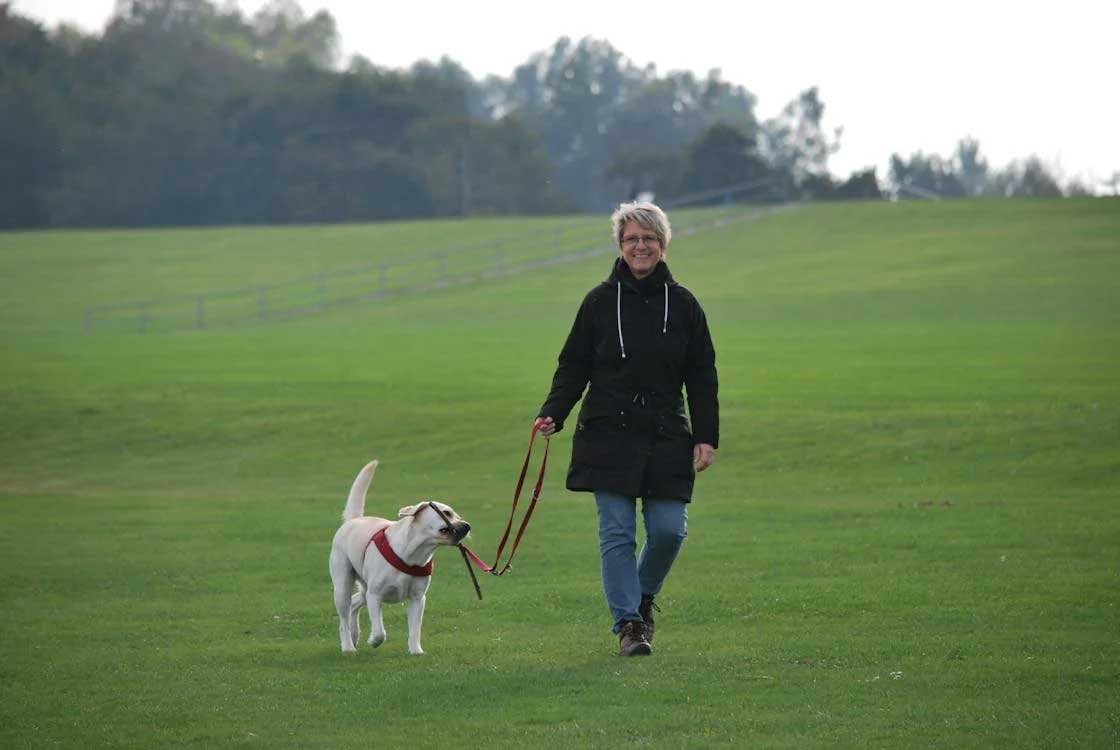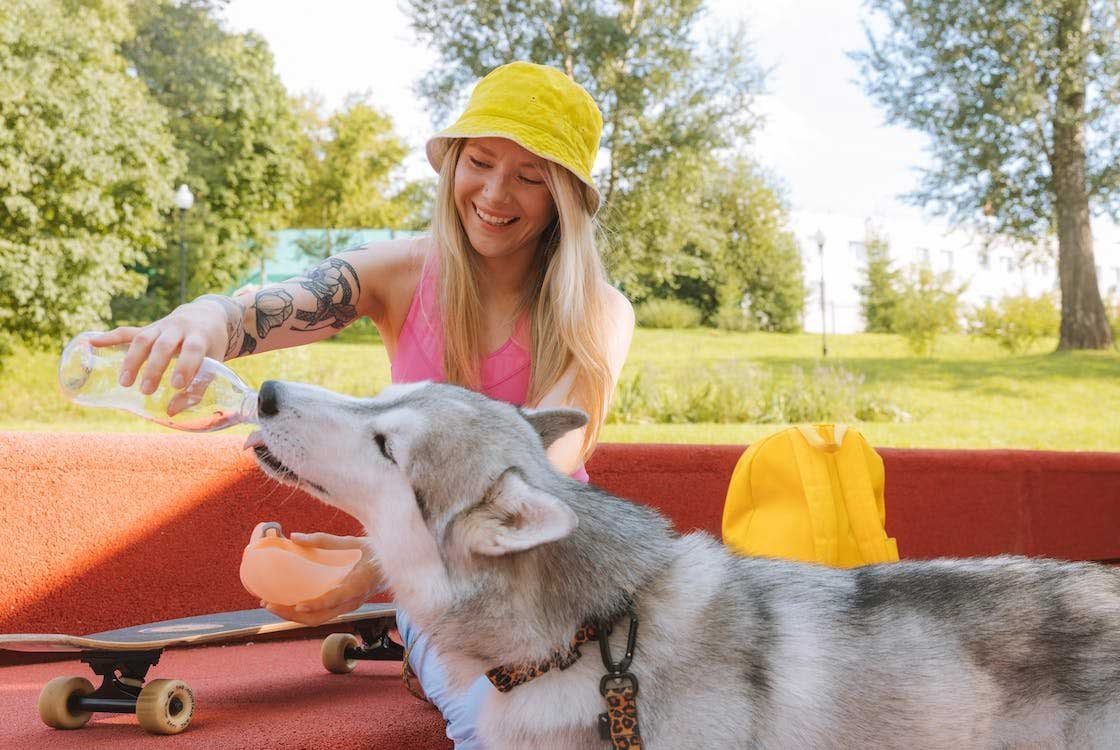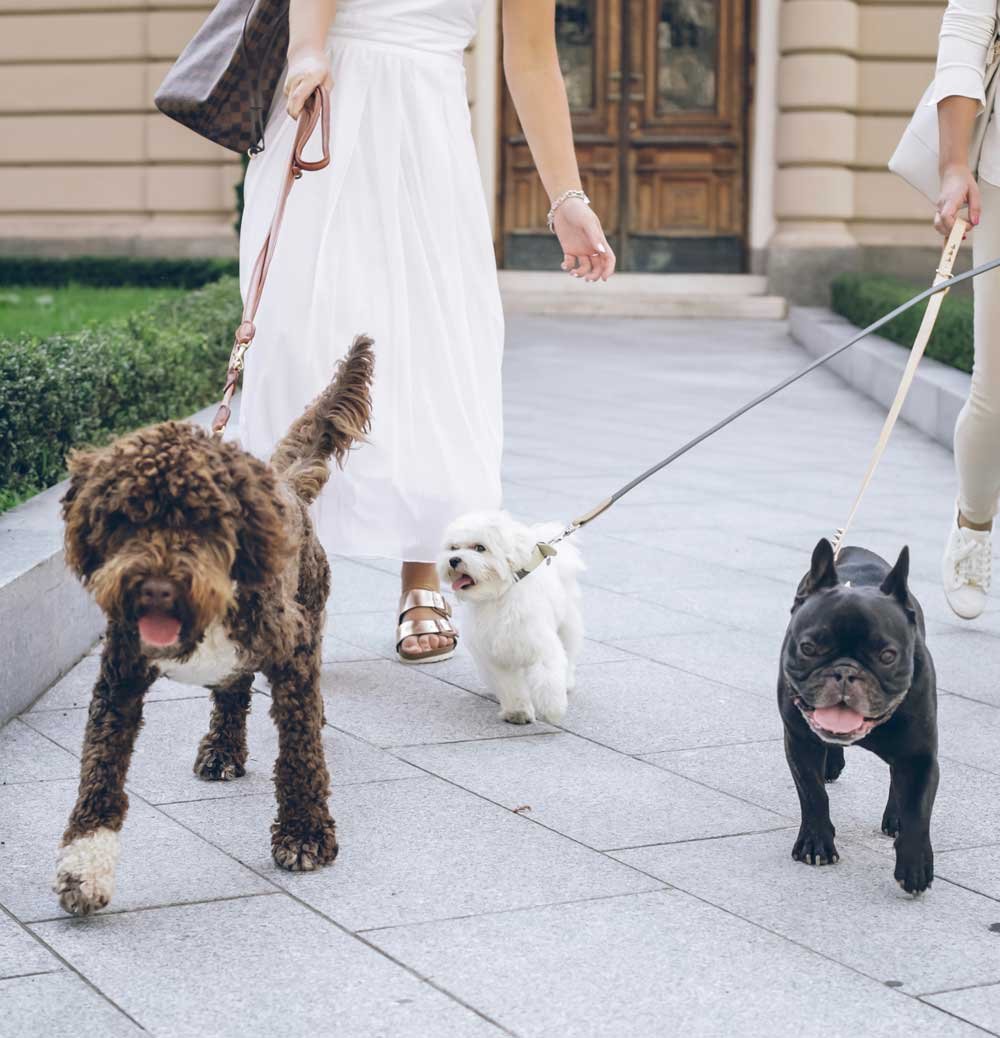Taking your dog for a walk is not just good for their body; it’s also a way to keep their mind active and strengthen the special connection between you and your furry buddy. But if you’re new to dog walking, it might feel a bit confusing at the beginning.
Don’t worry! We’ve gathered some helpful tips for beginners to make sure you and your dog have a great start to your walking adventures!

Dog Walking Tips For Beginners
1. Start with Short Walks
When you first start walking your dog, it’s important to keep the walks short and gradually increase the duration over time. This allows your dog to build up their stamina and get used to the routine.
Begin with 10-15 minute walks and slowly add a few minutes each week until you reach your desired walking time.
2. Choose the Right Equipment
Investing in the right equipment can make a world of difference in your dog walking experience. A sturdy leash, comfortable harness or collar, and proper footwear for yourself are essential.
Consider using a hands-free leash or a retractable leash for added convenience and flexibility.
3. Find a Safe Walking Route

Before heading out for a walk, scout your neighborhood for safe walking routes. Look for sidewalks, well-lit areas, and parks or trails that allow dogs. Avoid busy streets, construction zones, or areas with aggressive dogs. Safety should always be a top priority.
4. Practice Leash Etiquette
Helping your dog develop good leash manners is key to having a pleasant walk together. Instead of letting them pull ahead, encourage them to walk beside you or just a bit behind.
Try using positive reinforcement methods like treats or praise to reward your dog when they behave well. Remember, patience and consistency are essential for effective training.
5. Stay Aware of Your Surroundings
While walking your dog, it’s important to stay alert and aware of your surroundings. Keep an eye out for potential hazards, such as broken glass, toxic plants, or other animals.
Be mindful of approaching cyclists, joggers, or other pedestrians, and always be prepared to control your dog if needed.
6. Provide Mental Stimulation
Walking is not just about physical exercise; it’s also an opportunity for your dog to explore and engage their senses. Allow your dog to sniff around, investigate new scents, and interact with their environment. Providing mental stimulation is crucial for their overall well-being.
7. Stay Hydrated

Always bring water for both you and your dog, especially on longer walks or during hot weather. Keep your dog hydrated by offering water breaks throughout the walk.
Remember, dogs can’t sweat like humans, so it’s important to prevent dehydration.
8. Clean Up After Your Dog
One of the responsibilities of a dog owner is to clean up after their pet. Carry poop bags with you and promptly pick up any waste your dog leaves behind. Not only is it considerate to others, but it also helps keep the environment clean and hygienic.
9. Socialize Your Dog

Walking your dog provides an excellent opportunity for socialization. Encourage positive interactions with other dogs and people, but be cautious and respectful of other owners’ preferences.
If your dog is not yet comfortable around others, consider enrolling them in a socialization class or consulting a professional trainer.
10. Enjoy the Journey
Last but not least, remember to enjoy the journey! Dog walking is not just a chore; it’s a chance to spend quality time with your furry companion.
Take in the sights, enjoy the fresh air, and embrace the joy of being out and about with your dog.
Conclusion
By following these dog walking tips for beginners, you’ll be well on your way to becoming a confident and responsible dog walker. Remember to start small, stay safe, and make the most of this special time with your four-legged friend. Happy walking!
FAQS(Frequently Asked Questions)
How do I choose the right leash for my dog?
Consider your dog’s size, breed, and behavior to select a leash that provides comfort and control.
What is positive reinforcement, and how can I use it during walks?
Positive reinforcement involves rewarding good behavior. Learn effective techniques to encourage your dog’s positive behavior while on a leash in our comprehensive guide.
How can I establish a consistent walking routine for my dog?
Get practical advice on creating a consistent walking schedule that works for both you and your dog.
What signs of canine body language should I watch for during walks?
Understanding your dog’s body language is key to a successful walk. Discover the cues that indicate excitement, fear, or discomfort in our informative blog.
How can I address leash reactivity in my dog?
Leash reactivity is common but manageable. Learn effective strategies to address and overcome this behavior, ensuring a smoother and more enjoyable walking experience.



